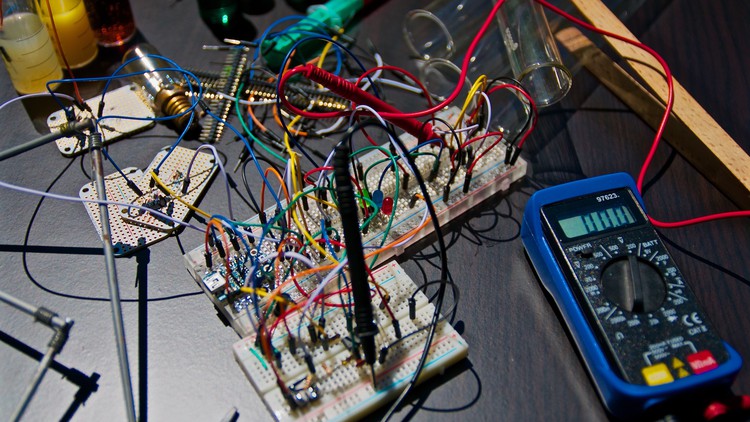Practical approach to Learn BEEE
Practical ways to learn BEEE
What you’ll learn
Practical approach to Learn BEEE
- Learn about the basics of electronics and electrical engineering in a way that is more practical than just reading about them.
- In this class, the student will learn about Kirchhoff’s Current and Voltage law. They will also learn about DC Circuits, AC Circuits, magnetic circuits, motors, and Transducers.
- All of this work is done with software, and everyone can figure it out quickly and easily.
- The BEEE core subject will be easier to learn about if you use a hands-on method.
Requirements
-
The basic course During this class, we explain everything.
Description
In this class, students will learn how to use BEEE in a real-world way.
It includes Ohm’s law, Kirchhoff law, node-branch and loop. It also includes Star-Delta transformation, Star-Delta transformation, Independent sources and Dependent sources, source transform.
They design, test, and supervise the production of electrical equipment, such as electric motors, radar and navigation systems, communication and power-generation systems, and other types of electrical equipment that use electricity.
Now there are a lot of different subfields in electrical engineering. These include digital computers and computer engineering as well as power engineering and telecommunications. They also include control systems and robotics as well as radio-frequency engineering and signal processing, as well as microelectronics.
Electronics and radio are made up of things like electricity, voltage, resistance, capacitance, and inductance. In addition to current, voltage, resistance, capacitance, and inductance, there are a lot of other interesting things about basic electronics technology that you should know about.
What are the basics of electricity?
THE THREE KEY FORCES. electricity is made up of voltage, current flow and impedance; these are three of the main forces (resistance). Every time there is an electrical circuit, these are the main things that control it. Voltage is the force that pushes the current through the wires in electricity.
Current is the movement of electrical charge carriers, like electrons or atoms that don’t have enough electrons. People use the uppercase letter I as a common sign for “current.” Physicists think that current moves from places that are positive to places that are negative. This is called “conventional current” or “Franklin current.”
Who this course is for:
- Beginners or students in their first year of engineering
Practical approach to Learn BEEE
English for Business and Law – Commercial Law
Download Now









